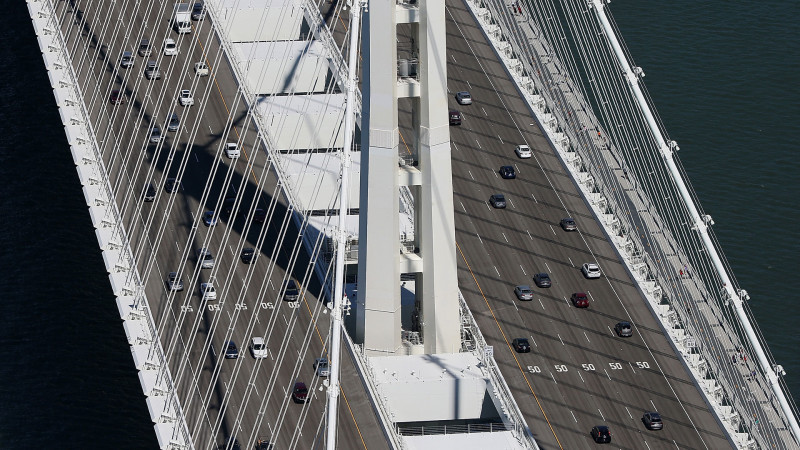According to Heminger, hyrdogen embrittlement arises when three things occur simultaneously: susceptible material, the presence of hyrdogen and when the steel in question is under high tension.
"The good news is the tower foundation rods are under lower tension than the rods at the east pier,' said Heminger. "But look, it takes three strikes for this problem to happen, and you don't want to be in the batter's box with two strikes for 150 years."
Brian Maroney, a chief bridge engineer with Caltrans, said it's premature to draw any conclusions about the water found in the tower.
"I find it interesting that people are only talking about a few samples," said Maroney. "And it's not clear what the history of those samples are. And they're only talking about chlorides. It's not that simple. You have to think about chlorides and bromides. You have to think about other telltale signature chemical elements. For example, we actually found fluoride in this water. Well, you don't find fluoride in the Pacific Ocean."
Maroney said that a team from a materials specialist company has been called in to ensure "a thorough sampling program" and analysis.
Maroney did acknowledge that there are some areas where water can enter the bridge, but said that is not surprising, given that the project is being completed in stages.
"You have to remember, construction's not done," said Maroney. "We're still working on this structure, on both sides."
At one point during the Forum show, host Michael Krasny asked all three guests just how safe the bridge is.
"If you have to be on a bridge in an earthquake, this is the bridge you want to be on,' said Maroney, citing his experience retrofitting structures throughout California.
"I think the bridge is perfectly safe for everyday use," said Heminger. "And I would trust Brian Maroney with my life, and I think all the rest of us should do the same. The bridge is fine. The issue is what happens in a major earthquake."
But Van Derbeken was not so confident. He said that people who have reviewed the bridge's record and decisions about the bridge question whether it is safe.
"Everywhere we look in the span there seems to be stuff that was compromised in some way, or decisions were made to borrow into safety margins, or things that normally are sacrosanct had to be, for whatever reasons, borrowed to get the job done," said Van Derbeken.
He said people who have voiced concerns to Caltrans have been dismissed and have been essentially told: "Go away. We understand where you're coming from, but we're satisfied."
Although Heminger said he is satisfied with the everyday safety of the bridge, he spoke for many when he expressed frustration with the ongoing saga of the eastern span:
"I do think it's maddening that we're talking about these bolts almost two years after we opened this bridge to traffic."
You can listen to the complete Forum conversation, including comments from Steve Heminger about holding people accountable, here:
